Six new sacrificial pits with over 500 items dating back about 3,000 years have been discovered at China's Sanxingdui Ruins.
Among the relics, there are pieces of exquisite gold masks, gold foil, bronze masks, bronze sacred trees, ivories, ivory products and jade.
The relics at Sanxingdui Ruins, as an important part of the diverse origins of the Chinese civilization, also had magical "echoes" in other ancient civilizations.
Here're some stunning pics that show the colorful mutual learning of ancient civilizations. Take a look.
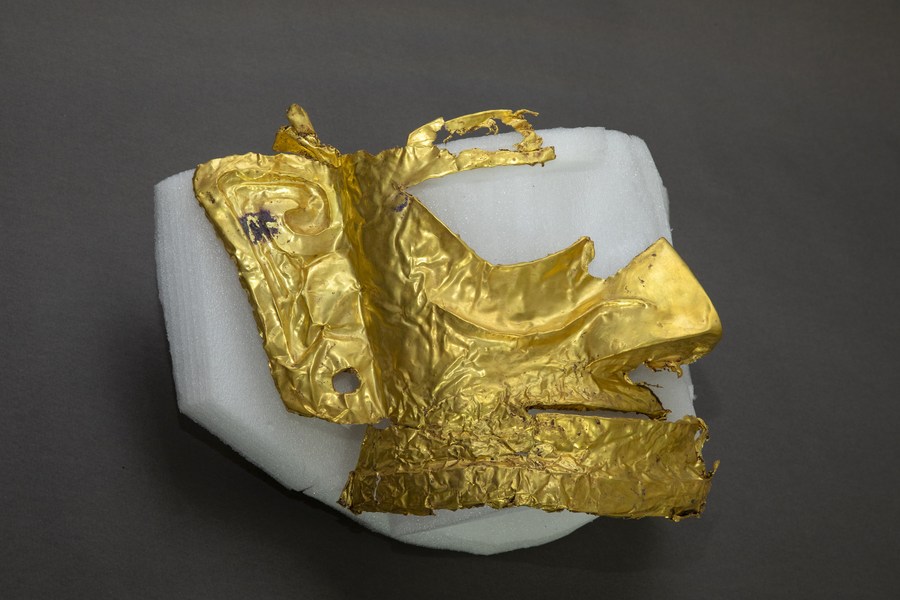 Photo taken on March 17, 2021 shows a broken gold mask unearthed from a sacrificial pit at the Sanxingdui Ruins site in southwest China's Sichuan Province. (Xinhua/Shen Bohan)
Photo taken on March 17, 2021 shows a broken gold mask unearthed from a sacrificial pit at the Sanxingdui Ruins site in southwest China's Sichuan Province. (Xinhua/Shen Bohan)
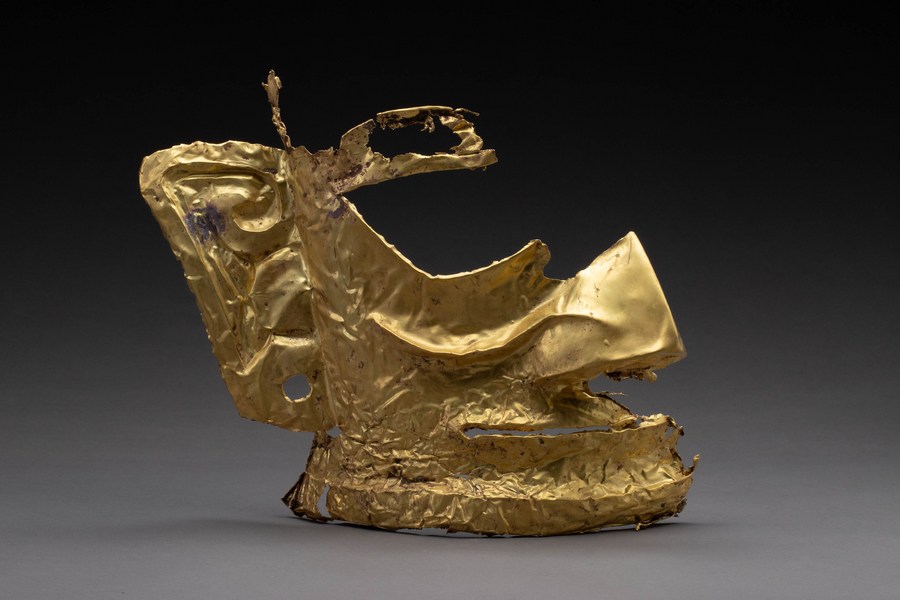 Undated photo provided by the Sanxingdui Ruins sacrificial pits archaeological project shows a partial gold mask unearthed from the Sanxingdui Ruins site in southwest China's Sichuan Province. (Sanxingdui Ruins sacrificial pits archaeological project/Handout via Xinhua)
Undated photo provided by the Sanxingdui Ruins sacrificial pits archaeological project shows a partial gold mask unearthed from the Sanxingdui Ruins site in southwest China's Sichuan Province. (Sanxingdui Ruins sacrificial pits archaeological project/Handout via Xinhua)
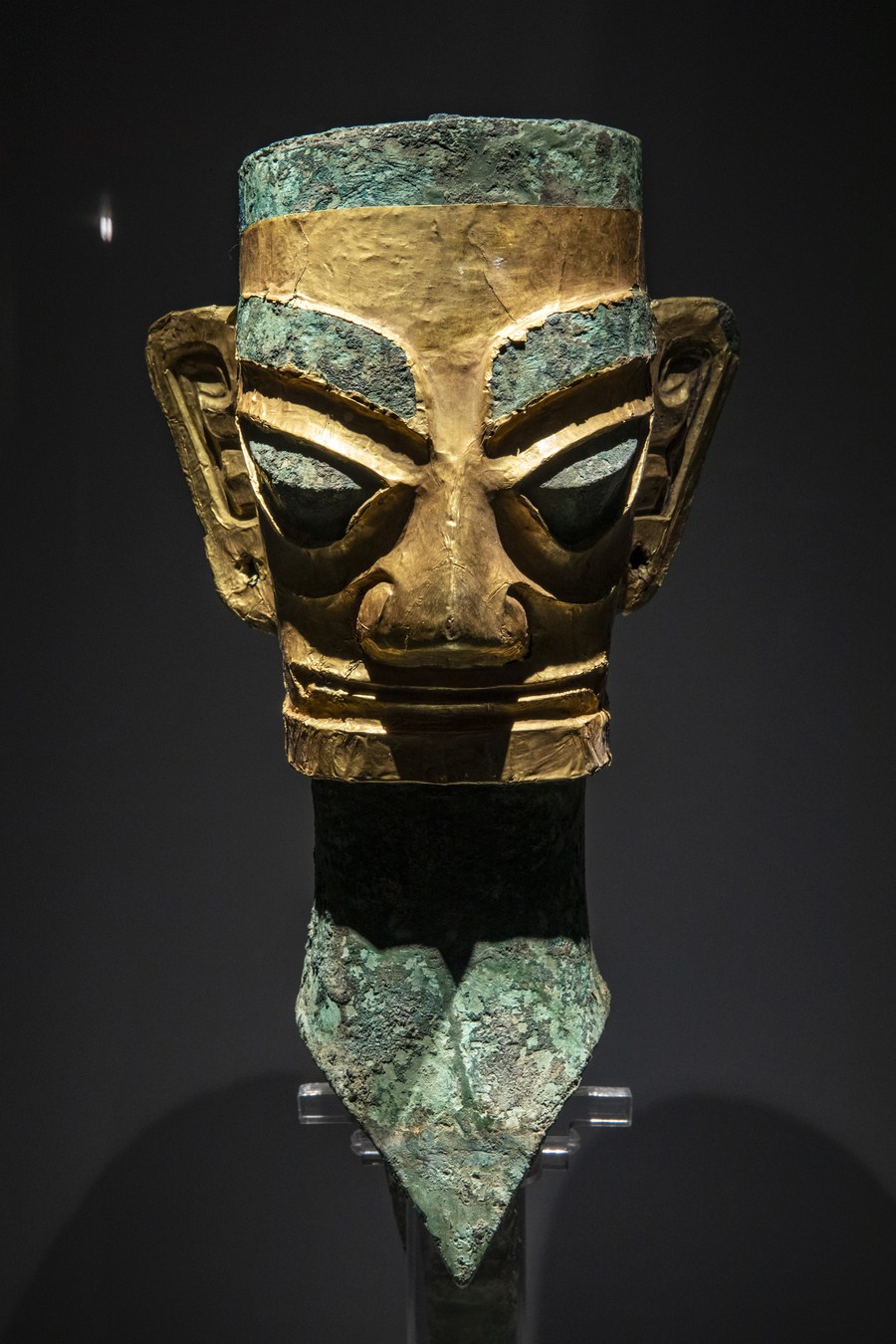 Photo taken on March 5, 2021 shows a bronze sculpture of human head with gold mask at Sanxingdui Museum in southwest China's Sichuan Province. The sculpture was unearthed from the No. 2 sacrificial pit at the Sanxingdui Ruins site in 1986. (Xinhua/Shen Bohan)
Photo taken on March 5, 2021 shows a bronze sculpture of human head with gold mask at Sanxingdui Museum in southwest China's Sichuan Province. The sculpture was unearthed from the No. 2 sacrificial pit at the Sanxingdui Ruins site in 1986. (Xinhua/Shen Bohan)
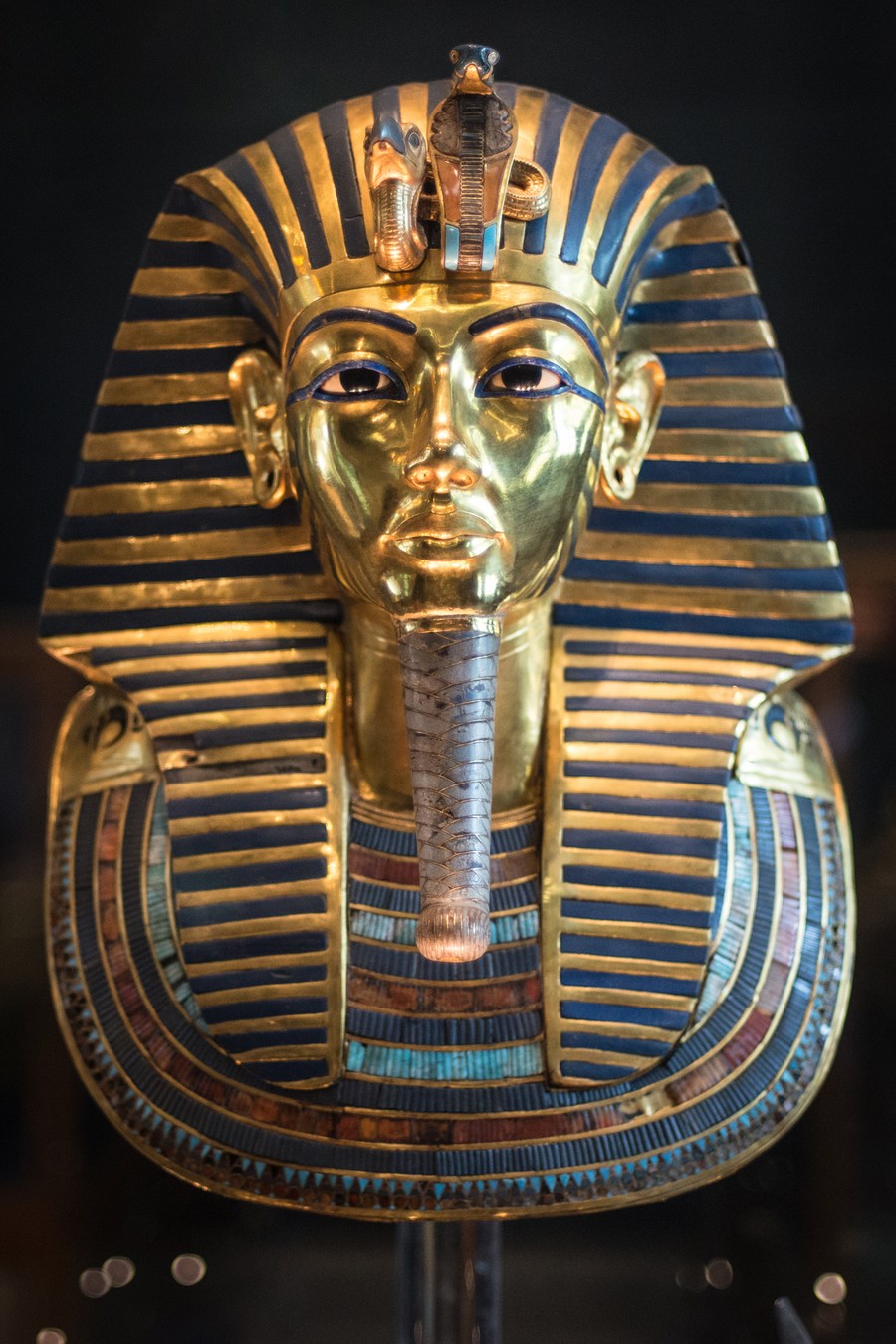 The photo taken on Jan. 23, 2015 shows the mask of Tutankhamun displayed in the Egyptian Museum, Cairo, Egypt. (Xinhua/Pan Chaoyue)
The photo taken on Jan. 23, 2015 shows the mask of Tutankhamun displayed in the Egyptian Museum, Cairo, Egypt. (Xinhua/Pan Chaoyue)
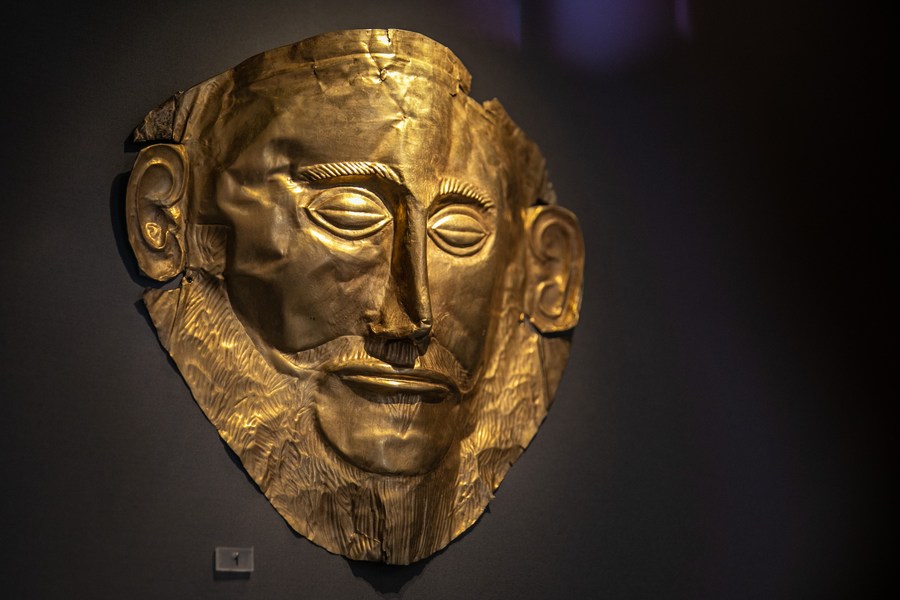 Picture taken on May 23, 2018 shows the gold death-mask known as "mask of Agamemnon" exhibited at the National Archaeological Museum in Athens, Greece. (Xinhua/Lefteris Partsalis)
Picture taken on May 23, 2018 shows the gold death-mask known as "mask of Agamemnon" exhibited at the National Archaeological Museum in Athens, Greece. (Xinhua/Lefteris Partsalis)
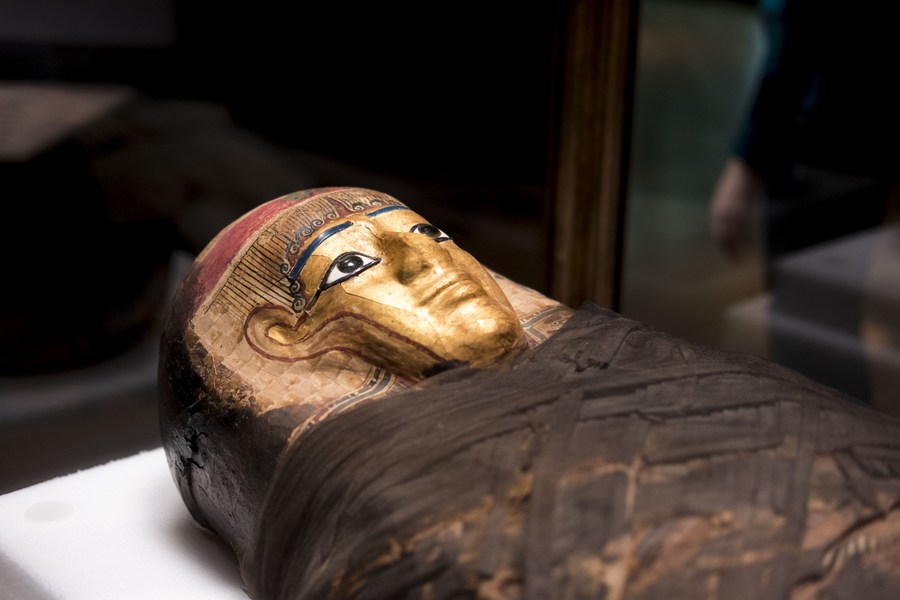 A gold-masked coffin named "Gilded Lady" is displayed at the preview of the "Mummies" exhibition at the American Museum of Natural History in New York, the United States, March 16, 2017. (Xinhua/Yuan Yue)
A gold-masked coffin named "Gilded Lady" is displayed at the preview of the "Mummies" exhibition at the American Museum of Natural History in New York, the United States, March 16, 2017. (Xinhua/Yuan Yue)
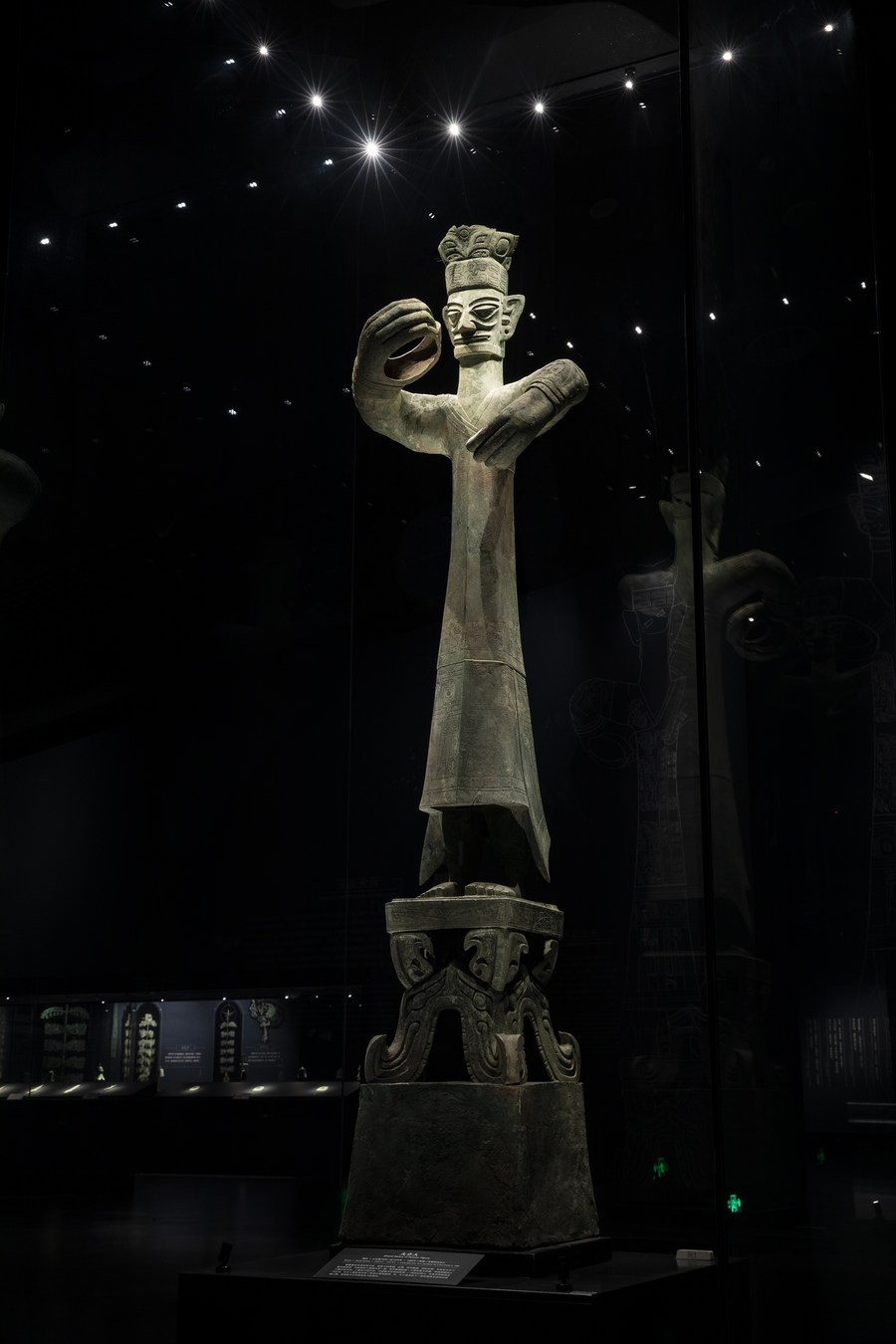 Photo taken on March 17, 2021 shows a bronze sculpture of human figure at Sanxingdui Museum in southwest China's Sichuan Province. The sculpture was unearthed from the No. 2 sacrificial pit at the Sanxingdui Ruins site in 1986. (Xinhua/Shen Bohan)
Photo taken on March 17, 2021 shows a bronze sculpture of human figure at Sanxingdui Museum in southwest China's Sichuan Province. The sculpture was unearthed from the No. 2 sacrificial pit at the Sanxingdui Ruins site in 1986. (Xinhua/Shen Bohan)
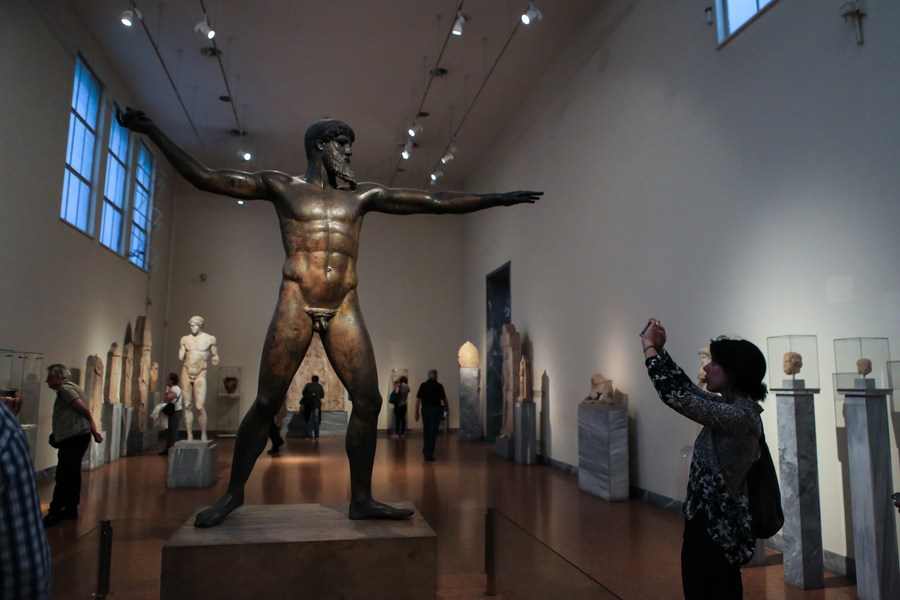 A woman takes pictures of a bronze statue of Zeus dated back to around 460 B.C. at the National Archaeological Museum in Athens, Greece on May 18, 2016.(Xinhua/Lefteris Partsalis)■
A woman takes pictures of a bronze statue of Zeus dated back to around 460 B.C. at the National Archaeological Museum in Athens, Greece on May 18, 2016.(Xinhua/Lefteris Partsalis)■




